Part Three — The Seven Universal Emotions

In Part One, I mentioned that, through the work of psychologist Paul Ekman, we’ve learned that there are seven main expressions common to every culture.
Emotions occur in response to some kind of stimulus (actual, imagined, or re-lived) such as:
- a physical event
- a social interaction
- remembering or imagining an event
- talking about, thinking about, or physically reenacting a past emotional experience
No matter where in the world we live, no matter how remote, we all display the same expressions for the same emotions. Even congenitally blind people who have never seen these emotions on other people’s faces spontaneously show the same facial expressions.
Anger
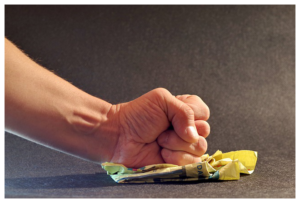
- When things go wrong, or some sudden unexpected occurrence happens that startles us or interferes with our plans, we feel anger, a normal response to frustration or shock.
- Anger is a strong feeling of displeasure, stress, frustration, and irritation in response to a perceived provocation, hurt or threat and it can frequently result in non-cooperation or antagonism towards the trigger.
- Anger can be caused by either external or internal influences, such as a person or event, social interaction, hurt, threat or confrontation — even confusion. Our past experience is what makes the difference. The things we experience in life train our brains to react in certain ways.
Potential triggers are almost endless — a certain word, an action, a place, or a person. Anything that our brain associates with a certain memory from our life experience can be a trigger. Depending on the meaning we’ve attached to these elements, their influence on our behaviour can run the gamut from mild annoyance to outright rage.
What to Look For
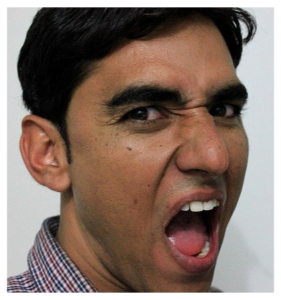
Facial expressions of anger can be:
- Inward angling of the eyebrows
- Frowning or scowling
- Clenched teeth and jaw
- Flushed cheeks
- Frustrated tears
- Thinned lips
Physiological Responses
Emotions begin in the amygdala, a part of the brain responsible for identifying threats. It sends out an alarm to alert us to protect ourselves. This happens so fast that we react before we can make a conscious decision or consider the consequences of our actions.
- The hands can turn cold and the face gets flushed as the blood is directed to the large muscles in preparation for fight or flight
- The body’s muscles tense up
- There is a burst of energy lasting up to several minutes
- The heart rate accelerates
- Blood pressure rises
- Breathing rate increases
- Upset stomach or clenched stomach
- Increased hormone levels (adrenaline and noradrenaline)
What the Character Feels
Involuntary physical characteristics
- Tension headaches
- Feeling hot
- Tingling in limbs
- Physical shutdown/temporary paralysis
- Increased energy levels, body temperature and muscle tension
- Excessive sweating
- Rapid heartbeat
Initial emotional characteristics
- Attention narrows so that nothing else signifies
- Inability to concentrate
- Focus is entirely on the target of the anger
- Rational thought is suppressed and distorted through a lens of fear
- Can be accompanied by feelings of hopelessness and powerlessness
What the Character Does
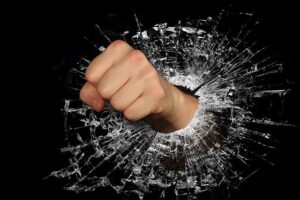 Bodily reactions of anger can be:
Bodily reactions of anger can be:
- Raised voice
- Clenched fists
- Pacing, agitation
- Heavy or fast breathing
- Trembling and shaking
- Pacing excessively
- Ready to fight
Subsequent reaction (after initial processing):
- Focused aggression towards the trigger (object or person)
- Volatility in social situations
- Passive-aggressive interactions with others
- Withdrawal and isolation
- A return to self-control after assessing the situation
In addition, the character may have thoughts like:
- Why me?
- When’s it going to stop?
- What does he/she/it/they want?
- It’s his/her fault.
- What’s your problem?
- Not again?
- What do I have to do?
Similar to other animals, our physical expressions of anger — making loud sounds, baring our teeth, a direct stare and attempting to look bigger, are all inherent behavioural patterns meant to make us appear more dangerous to our aggressor.
As a micro-expression, anger “leaks” as a slight furrowing of the forehead as the inner part of the eyebrows lower and get closer together. The lips may purse, and there may be a pulse of the jaw muscle as the teeth are clenched before the character can gain control.
A deliberate display of anger can be used as a premeditated, manipulative strategy to deflect a viewer from other emotional “tells” such as fear, surprise, contempt or hatred.
Anger causes a loss of our self-monitoring ability and objectivity. When anger overtakes us, we are no longer completely logical or rational. This is true of any extreme emotion. Cultivating the ability to recognize this loss of control before it escalates can go a long way to helping us overcome our own emotional triggers.
We don’t choose the emotions we experience, but we do choose our responses to them. Our responses direct our actions, so we must become more aware of and familiar with our own emotional experiences, understanding what motivates them.
Perhaps a protagonist could reach such a realization, learning how to monitor and control his own emotional excesses and break through to a better way of thinking and reacting.
Spectrum of Anger (from weakest to strongest)
- Annoyance
- Frustration
- Exasperation
- Argumentativeness
- Bitterness
- Vengefulness
- Fury/Rage
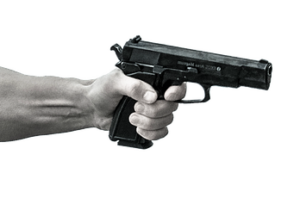 Anger Triggers
Anger Triggers
Many different situations may provoke anger. Situations that provoke anger may fall into more than one category.
- Frustrations: Usually situations which make us feel inadequate or blocked. Constant failure at a task or inability to complete a project, often as a result of inferior quality material or work, clumsiness or another’s laziness or indifference.
- Irritations and interruptions: When we’re focused on a task, extraneous sounds or interruptions by others can trigger an angry reaction. Focus requires concentration and when that concentration is broken, it triggers the same physiological symptoms as a threat, surprise or shock.
- Verbal, Physical or Sexual Abuse: When someone puts us down, hits us or forces us to do something that we do not want to do, anger is a normal and appropriate reaction.
- Unfairness: Being treated unfairly can also trigger anger. When someone takes credit for work we’ve done or we’re wrongly blamed for another’s transgression, a normal reaction is anger.
No two people will react in exactly the same way in the same situation. Our reactions depend on our own life experiences and the significance the trigger event has for us. So too does the degree of our response to the trigger. Some will react with mild annoyance, some with rage, and some might not even notice. It’s not what happens that triggers us. It’s what the event or situation means to us.
- Evaluations and misinterpretations: How we interpret a situation influences our emotions. Someone else’s behaviour may trigger a violent reaction in us, though they had no intent to do so. Being late to a meeting could be interpreted as not valuing another’s time or it could simply mean there was a lot of unexpected traffic or construction.
- Expectations: We may have a preconceived idea of how things “should” be. If that expectation isn’t met, it frustrates us, and we find ourselves confused, disappointed or stressed out, not knowing what to do next.
- Negative self-talk: A habit of worrying and reliving situations that annoyed or frustrated us doesn’t help. It can make angry feelings more intense and last longer, making us feel worse.
- Tension/Stress: When we’re already in a stressful or tense situation, we are more prone to losing control. It’s a lot easier to go all the way to fury when we’re already frustrated, and it can happen very suddenly. To an observer, such an escalation can look like it happens out of the blue with no apparent provocation.
Types of Anger and How to Use Them in Storytelling
Anger shows itself in many different ways. When we write our characters, we need to understand them — not only what triggers their anger but how they will display it.
 Passive anger: Also called passive-aggressive anger. When we have other emotions we’d prefer to avoid dealing with, we may default to anger in order to avoid them, deflect from them, or replace them. Emotional pain, fear, loneliness and loss can be suppressed for years, erupting as anger when something triggers old traumas.
Passive anger: Also called passive-aggressive anger. When we have other emotions we’d prefer to avoid dealing with, we may default to anger in order to avoid them, deflect from them, or replace them. Emotional pain, fear, loneliness and loss can be suppressed for years, erupting as anger when something triggers old traumas.
Some people internalize their anger so that it eats away at them until they can no longer stand it and it explodes in a sudden display of violence. They hold in their hurts, slights and hardships both real and imagined, because they are unable to deal with the situation in the moment. Instead they bottle up their anger but it leaks out in small-minded, unkind behaviours, like holding grudges, prejudice and judgemental comments, telling lies and spreading rumours, unfairly blaming others for bad events or assuming that others have wronged them deliberately.
You can visualize this type of anger as an implosion, focused inward.
It’s impossible to heal an emotional wound like passive anger until one admits that the problem lies within oneself. Anger at an emotionally abusive relationship or a toxic friendship is a warning sign that something about one’s own interpretation of the situation needs to change. This realization might give your character the courage he needs to take a stand, open up communications or make some life changes.
We could create a character who feels like a victim all the time, his grievances and unkind actions dictated by his suppressed anger. This character could be a protagonist whose eventual transformation means that he learns to deal with his anger, as he comes to understand that his fear of confronting his own shortcomings and the repeated situations in which he finds himself are of his own making. Or the character could be an antagonist who makes the protagonist’s life miserable.
In either case, this character is mean, petty, vindictive and constantly trying to bring others down in order to make himself feel better. His fear of admitting his own weakness makes him angry with himself. He doesn’t have the courage of his convictions. He’s afraid to reveal himself as wrong or vulnerable so he comes across as arrogant, rude and unkind, an unpleasant individual whom nobody wants to be around. This makes him even more angry because he feels victimized and rejected.
In order to show this, the character could become withdrawn, his anger focused on the object of his hatred rather than on his own fears and shortcomings, the true root causes of his anger. He could become nonverbal, internalizing his feelings of inadequacy and rejection.
Or he could lash out at others when things don’t go his way, overreacting to the smallest slight, either real or imagined, in a display of aggressive anger.
![]() Aggressive anger: The instinctive, natural way to express anger is to respond aggressively. Often extremely violent, this type of anger is loud, usually harmful and is aimed at the emotional trigger. You can visualize this type of anger as explosive, affecting everyone and even objects in the vicinity, exploding outward from the initial spark or trigger.
Aggressive anger: The instinctive, natural way to express anger is to respond aggressively. Often extremely violent, this type of anger is loud, usually harmful and is aimed at the emotional trigger. You can visualize this type of anger as explosive, affecting everyone and even objects in the vicinity, exploding outward from the initial spark or trigger.
Often retaliatory, a character’s anger can result in their harming the person they believe has harmed them, or it could be aimed at something or someone that the other person values — for example, keying their car, shouting epithets and abuse, or abducting their child.
If the person is alone, difficulty with an object such as a computer, phone or other object which compounds the aggressor’s frustration, hurt or self-hatred, will receive the brunt of the resulting violence. This is especially true if the person habitually denigrates himself for being stupid, inadequate, or less than perfect. He’s not angry at the object. He’s angry with his perception of himself. Often this is a learned behaviour from childhood, based on repeated negative opinions from parents or others in authority.
This type of anger is often portrayed in stories of domestic abuse or addiction to alcohol or drugs, and is usually the behaviour of the antagonist, though it’s possible the protagonist could behave this way at the beginning of the story, eventually gaining control of his emotional outbursts through introspection, help from others and his own pursuit of self-knowledge by the end of the narrative.
Reaction to aggressively angry behaviour by others is usually immediate and defensive or retaliatory. This type of situation can escalate rapidly unless one of the participants can control their anger in order to find a more rational solution.
Anger causes us to lose our self-monitoring ability and objectivity, resulting in a loss of emotional control. Often, the aggressor is beyond rationality, fully in the grip of his anger, literally unable to see reason. While under the influence of adrenaline and noradrenaline, his ability to regain control is severely compromised. Only when these hormones subside can he regain control and a measure of sanity.
Often, the elements that act as triggers for our anger can go entirely unrecognized, the emotions being triggered without conscious awareness. In order to learn how to overcome aggressive anger, a character must learn to identify what is setting him off. Once he is more aware of his anger triggers, he can learn to control his reactions when they occur and transform his aggression into a more assertive and positively-directed form of anger.
Assertive anger: This is the healthiest type of anger. Its purpose is problem-solving and working through the problematic and unproductive feelings of anger to find a resolution.
Anger is a red flag, an indication that the character must take constructive action. It can be a powerful source of energy to get things done, solve problems and lead to positive change when it is expressed in a useful and constructive way. Anger can be a powerful motivator that can help your character make positive changes in his life, pushing him to solve problems. It can help him to stand up for himself and others. Many who feel angry about social injustice may speak out and bring about positive change to the damaged system that allows such injustice to continue.
This type of anger is often the driving force behind character transformation and can be found in many memoirs and character-driven stories.
For the next several weeks, we’ll explore each of the Seven Universal Expressions Of Emotion. Next week, we’ll cover Sadness.
Happy Writing

If this information is helpful useful or simply interesting to you, please leave a comment below and let me know. I’d love to hear from you.
Related Posts:
- Part One — Everything I Know About Character Development, I Learned From My Dog
- Part Two — The 7 Universal Emotions — Surprise
- Part Three — (this one) — The 7 Universal Emotions — Anger
- Part Four — (coming soon) — The 7 Universal Emotions — Sadness
Beverley Hanna
Trained as an artist in the late 1960’s and early 1970’s, I was one of the first creatives to be employed in the computer graphics industry in Toronto during the early 1980’s. For several years, I exhibited my animal portraiture in Canada and the U.S. but when my parents needed care, I began writing as a way to stay close to them. I’ve been writing ever since. I run a highly successful local writer’s circle, teaching the craft and techniques of good writing. Many of my students have gone on to publish works of their own. I create courses aimed at seniors who wish to write memoirs, with a focus on the psychology of creatives and the alleviation of procrastination and writer's block.
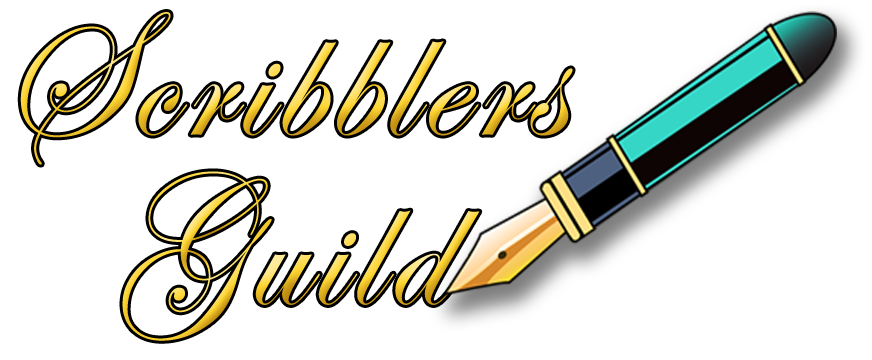
3 Comments
Pingback:
Pingback:
Pingback: